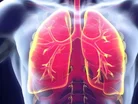China uses AI to treat lung cancer

As the use of artificial intelligence (AI) is on the rise within the healthcare industry, China is quickly embracing the technology to tackle lung cancer.
The country has one of the highest rates of lung cancer in the world, with an estimated 300mn smokers and hazardous air pollution, especially within the industrialised northern regions.
It has been predicted that by 2020 there will be an annual rate of 800,000 diagnoses and 700,000 deaths, according to Time Magazine.
There are also approximately 80,000 radiologists in the country, who examine around 1.4bn radiology scans per year.
SEE ALSO:
AI ca be connected to scanners, which could improve the medical diagnosis procedure, through the processing of computed tomography scans and X-rays.
This technology can spot potentially dangerous lesions and nodules in patients.
The Shanghai Changzheng Hospital has been testing out this method, using technology created by Infervision.
“Our goal at Infervision is to build a stronger medical industry and help accelerate diagnoses which is so important for patient,” stated Chen Kuan, Infervision’s founder and CEO.
The Chinese startup is working with big technology companies, such as GE Healthcare, Cisco, and Nvidia, with the technology being tested in more than 20 tertiary grade A hospitals across the nation.
- AstraZeneca Sees Surge in Growth Amid Challenges in ChinaMedical Devices & Pharma
- The Merck Group: Pharma's History & Innovation in IndiaMedical Devices & Pharma
- The Merck Group: Pharma's History & Innovation in ChinaMedical Devices & Pharma
- Doctors trial AI tool to process patient lettersTechnology & AI



